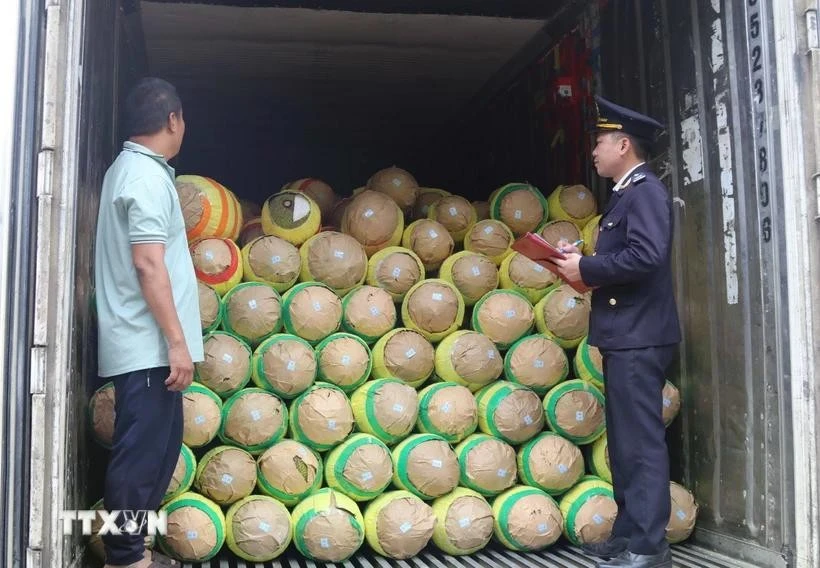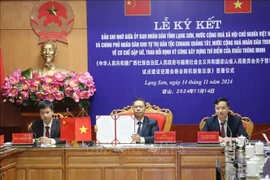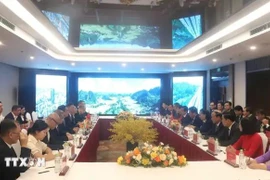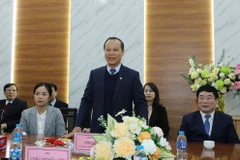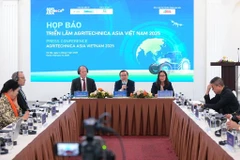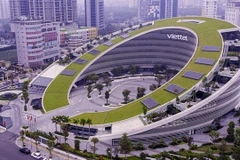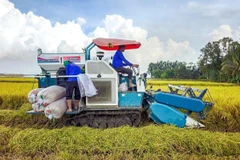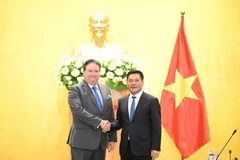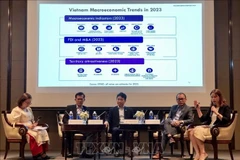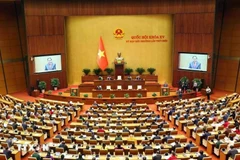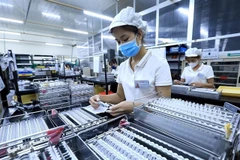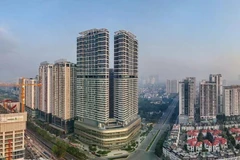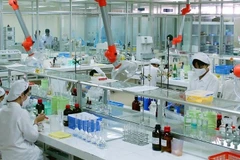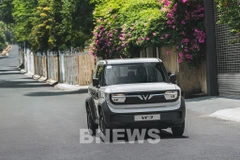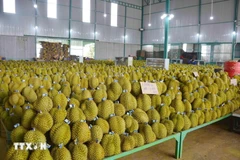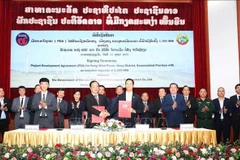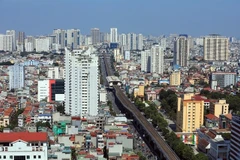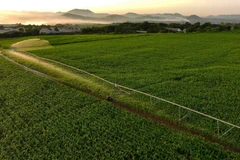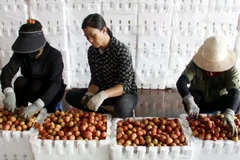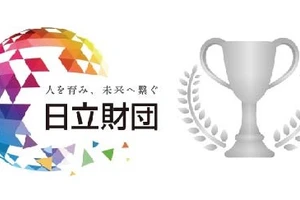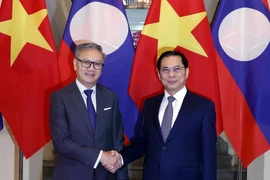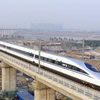Beijing (VNA) – Agriculture is a vital area of cooperation between China’s Guangxi province and Vietnam, highlighted an article on the Ministry of Commerce of China’s website specialising on international trade.
As a gateway for trade with ASEAN countries, Guangxi has been strengthening agricultural exchanges and cooperation with Vietnam and other ASEAN nations, achieving significant results in recent years, it said.
The article opened by reporting the busy atmosphere at Youyi Guan Border Gate, one of the largest and most convenient land crossings between China and Vietnam. According to Chinese customs data, in 2024, the total import-export value between China and ASEAN countries through this gate reached 472.69 billion RMB (64.8 billion USD), representing a 13.4% year-on-year increase, and 98.9% of the total foreign trade at the gate. It has also become the largest land entry point for fruit imports to China. Fruits such as durian, jackfruit, and dragon fruit from Vietnam and other Southeast Asian countries are transported to China in large quantities via the gate. In 2024 alone, the border gate imported 20.06 billion RMB (about 2.7 billion USD) worth of fruits.
The article cited data from the Guangxi Department of Agriculture and Rural Affairs as showing that in the first 11 months of 2024, the total trade of agricultural products between Guangxi and Vietnam reached 18.37 billion RMB (2.5 billion USD), up 17.7% compared to the same period of the previous year. Vietnam has been Guangxi’s largest trading partner for 26 consecutive years. The fruit import-export turnover alone accounts for over 40% of total agricultural trade between Guangxi and Vietnam, and more than a third of China’s fruit trade with ASEAN countries. Guangxi has become a key hub for fruit trade between China and Vietnam.
It noted that in addition to expanding agricultural trade, Guangxi is actively seeking more cooperation with Vietnam in areas like e-commerce for agricultural products, agricultural-industrial collaboration, and agricultural technology exchange. Guangxi has encouraged local businesses to invest in Vietnam’s agriculture and has established several pilot agricultural cooperation zones, while promoting joint ventures in smart farm projects along the border, aiming to develop a modern agricultural industrial chain. By the end of 2024, 18 agricultural enterprises from Guangxi had registered investments in Vietnam.
Guangxi has supported the China (Guangxi) - Vietnam Crop Breeding Laboratory in Vietnam, which showcases new crop varieties and agricultural technologies while fostering talent in agricultural science. The lab has displayed 121 high-quality crop varieties, covering over 133,400 hectares, thus improving agricultural productivity.
Additionally, Guangxi has established a major animal disease prevention and control testing station to collaborate with Vietnam’s border provinces.
Guangxi and Vietnam are actively exploring cooperation on pilot smart farm projects along the border and working on the development of smart border crossings between China and Vietnam. They are also strengthening collaboration in agricultural product e-commerce, the article noted.
At the recent 7th China-ASEAN Agricultural Cooperation Forum, Guangxi and Vietnam’s Ministry of Agriculture and Rural Development signed a memorandum of understanding aimed at further enhancing collaboration in agricultural product trade, agricultural investment, agricultural technology, and aquaculture.
The article concluded that in the future, Guangxi will continue to strengthen its role as a key farm produce trade hub between China and Vietnam, expanding opportunities for agricultural cooperation and opening new market prospects for businesses in both countries./.
